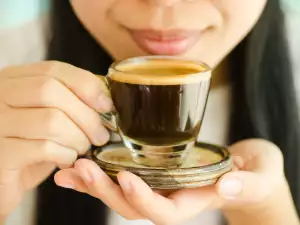Caffeine is a naturally occurring ingredient that is found not only in coffee but also in tea. It helps to wake us up and has an invigorating effect. This is due to the fact that caffeine is a stimulant that improves brain activity, it also increases excitability. Despite the presence of caffeine in tea, the effect of this ingredient is weaker than that of coffee, so tea is not prohibited for heart problems, associated with palpitations and insomnia.
Not all types of tea contain caffeine. The ingredient is only found in those made from the Camellia Sinensis plant. The group includes white, green, yellow, red (oolong), black and pu'er teas. Herbal and fruit teas are made from other plants without caffeine.
According to experts, caffeine has a natural defense effect that protects the plant from insects and herbivores, thanks to its bitter taste.
The amount of caffeine in tea depends a lot on how the drink is prepared. Important prerequisites are the amount of tea, water temperature, brewing time and also whether the tea is loose or in sachets. Larger amounts of tea, hotter water and longer boiling make the tea contain more caffeine.
The oxidation of tea is a series of chemical reactions that give the tea a brown color and affect the amount of caffeine, taste and aroma of the drink. Along with this appears to be a major factor in the level of caffeine in the tea.
To achieve oxidation, the tea leaves are rolled, creating cracks and allowing oxygen to react with the plant's enzymes.
The slight oxidation of the tea makes it lighter and less caffeinated. This also affects the taste and aroma, which are also lighter. Black tea is the most oxidized and contains the most caffeine, while white tea is the least oxidized and contains the least caffeine.
Here is the caffeine content of the most popular types of tea.
Black tea

Black tea is the most oxidized and aromatic tea, which makes it the most caffeinated. Each 8-ounce cup of black tea contains between 60 and 90 milligrams of caffeine.
Oolong tea
Oolong tea in this arrangement falls between black tea and green tea, with each cup containing 50 to 75 milligrams of caffeine.
This type of tea lowers cholesterol, stabilizes blood sugar, prevents allergies and regulates weight. It is a traditional Chinese tea and is most popular in Southeast Asia.
Green Tea
Green tea is among the popular types of this drink. It is characterized by its low caffeine content, from 35 to 70 milligrams per cup of tea and is liked for its sweet and sour taste. Drinking green tea boosts the immune system, because it contains antioxidants.
White Tea
White tea is minimally oxidized. It contains little caffeine, only 30 to 55 milligrams per 250 milliliters of tea. White tea is milder and sweeter.
Herbal and Fruit Tea
Herbal and fruit teas are not considered true tea because they are not made from Camellia sinensis. They are a mixture of herbs, fruit and flowers. These teas contain no caffeine at all due to the absence of oxidation in them.
Read more:




















Comments